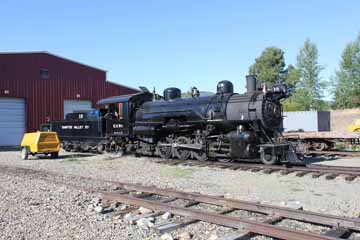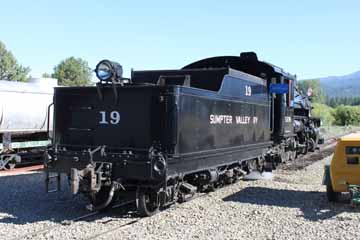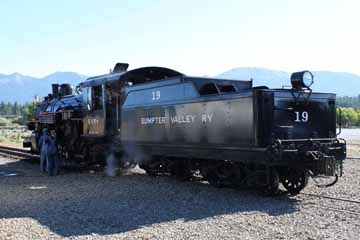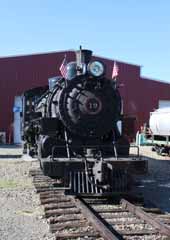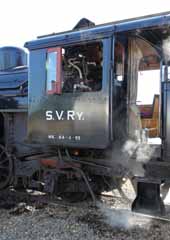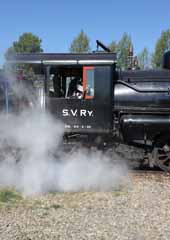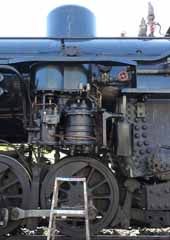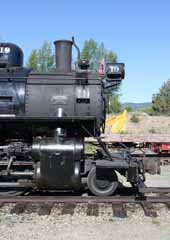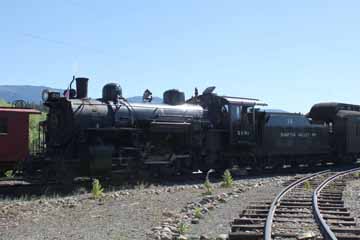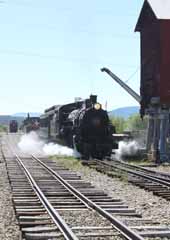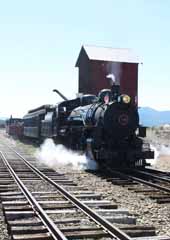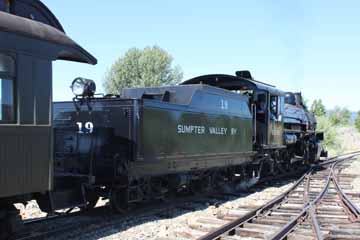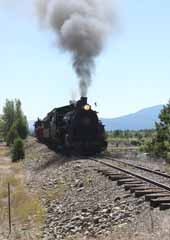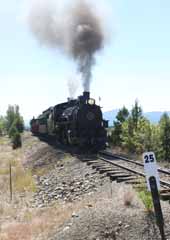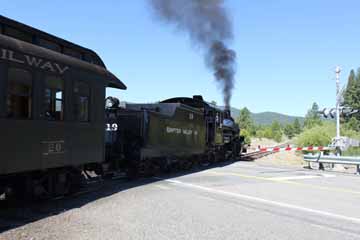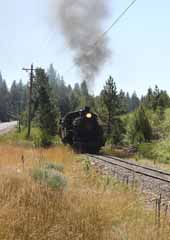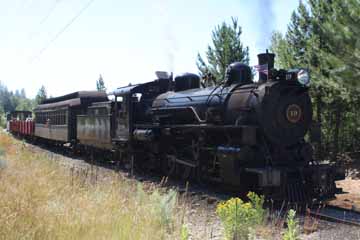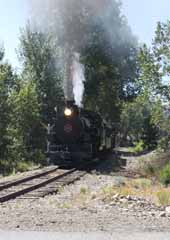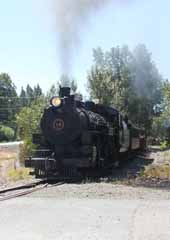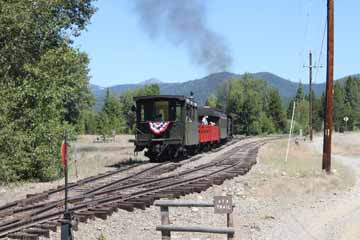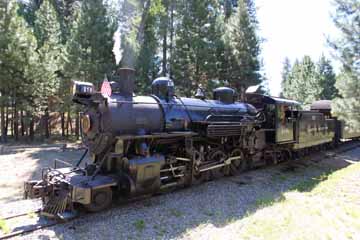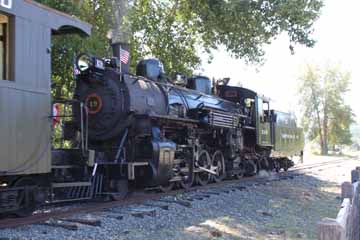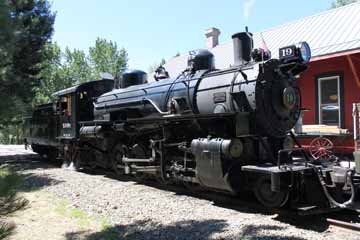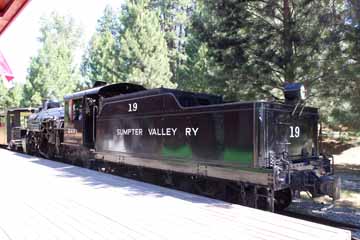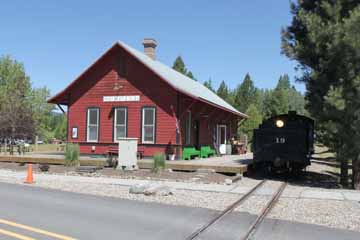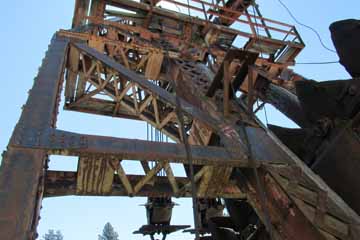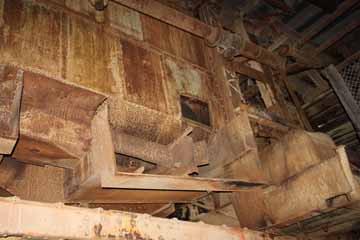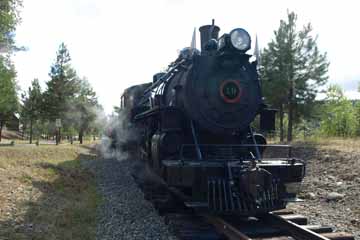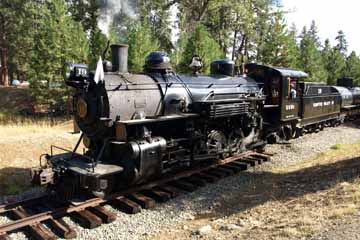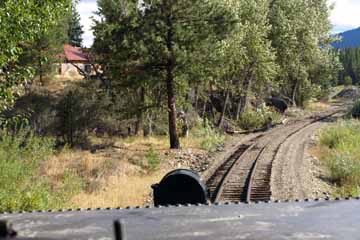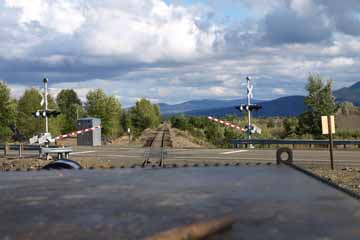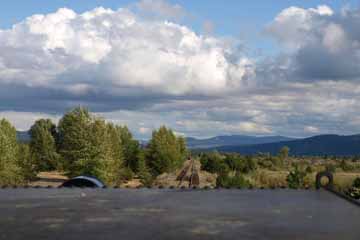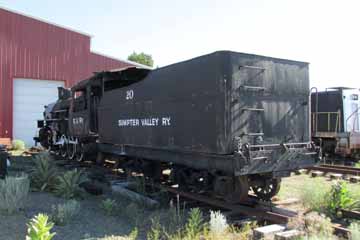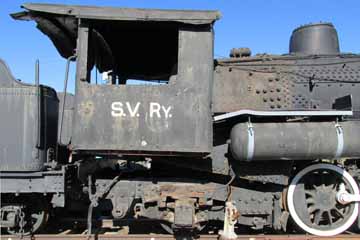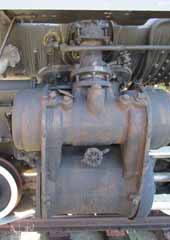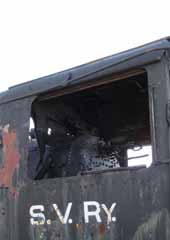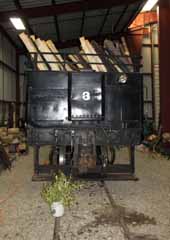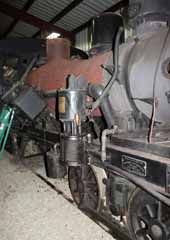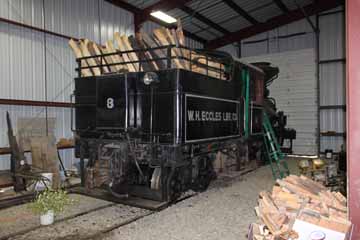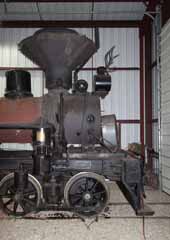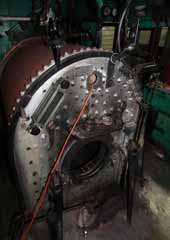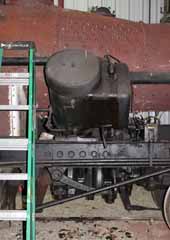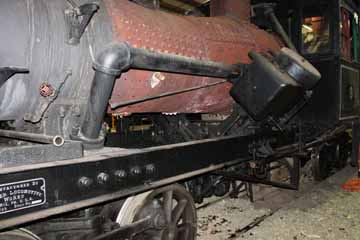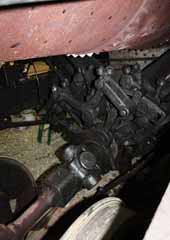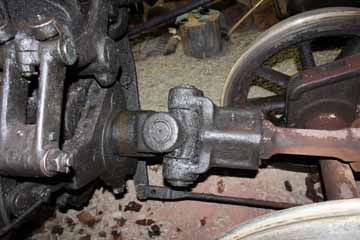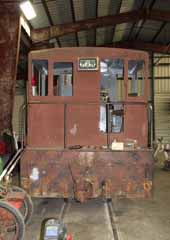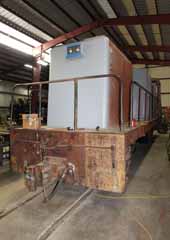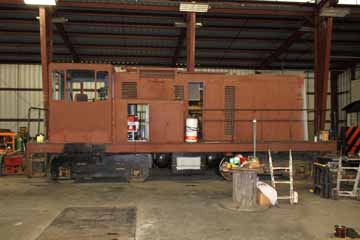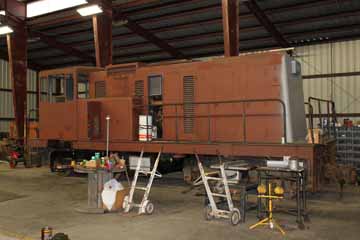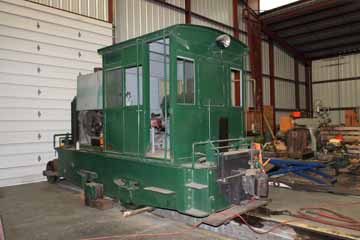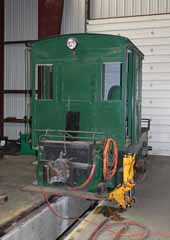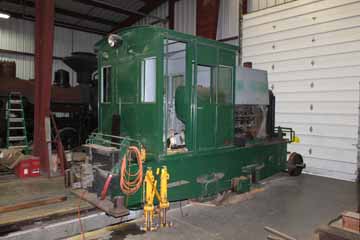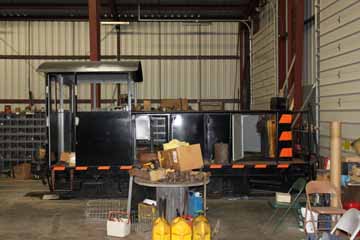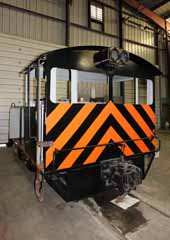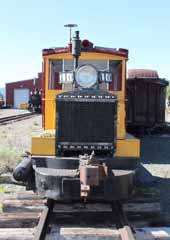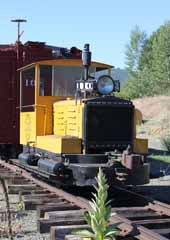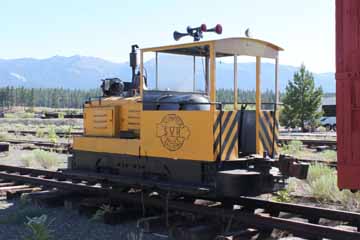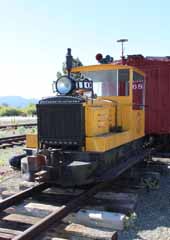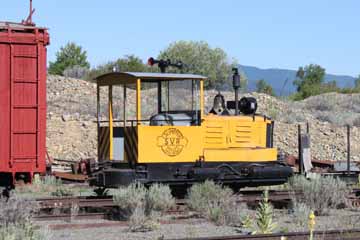

Sumpter Valley Railroad is a narrow gauge (36") line built to haul timber from the forests in Oregon's Blue Mountains to South Baker City. The railway was owned by the Grande Ronde Lumber Company in Perry, OR. Finance was provided by a group of Mormons in Utah.
Work started in 1890. The following year, the line reached McEwen, twenty-two miles west of Baker City, and the railroad began offering passenger and freight service. The line was extended further west, reaching Sumpter in 1896 and arriving at Prairie City, a ranching and mining community along the John Day River in Grant County in 1910. However, growing competition from automobile and truck traffic in the following decades led to progressive line closures and eventual abandonment of the line in 1947. The tracks were ripped up and the right of way sold.
In January 1971, Sumpter Valley Railroad Restoration Inc., was established to breathe life back into part of the line. It negotiated to lease six miles of the right of way from McEwan to Sumpter, and in 1975, levelling began and tracks were laid by summer the following year. The first length of new line was officially opened on 4th July 1976, and the final section to Sumpter completed in spring 1991.

Built as wood burners, the Mikes were later converted to burn oil and, during their years on the Sumpter Valley, they underwent a number of other improvements, including instalation of Rushton smokestacks, Franklin automatic fire doors and an additional 11" air pump.
In 1940, the SVR acquired two 2-6-6-2T
locomotives (#250 & #251) from the Uintah Railway, and #19 and #20 were retired. Shortly after, the Mallets' saddle tanks were removed and the locomotives were mated to the tenders from #19 and #20.
#19 is one of two steam locomotives that operate on the line between McEwan and Sumpter. The second is a two-truck Heisler, SVR #3, shown later on this page.
#19 is one of two Mikado type (2-8-2) locomotives built in 1920 at Alco’s Schenectady, NY, works to the Sumpter Valley Railroad’s specification (you can see the second locomotive, SVR #20, later on this page). They were originally intended to operate on the Oregon Lumber Company portion of line out of Austin, OR, and were numbered #101 and #102. However, they ended up operating mostly on the Sumpter Valley, with #102 renumbered #19 and #101 as #20.
#19 weighs 128,000 lbs, 100,000 lbs on its 44" drivers. With 19" x 20" cylinders, it was designed to operate at a boiler pressure of 170 psi, but now operates at 150 psi delivering 19,000 lbs tractive effort.
The two original tenders remained on the WP&Y mated to articulateds #250 & #251, and later went to Guatemala. They eventually returned to the SVR to be reunited with their engines. The USA 190 class tenders that came with the Mikados were traded back to the WP&Y for two steel flatcars and a tank car.
In 1941, both locomotives were sold to the White Pass & Yukon Railroad in Alaska. #20 was renumbered #80 and #19 as #81.
After retirement in 1958, they sat in Skagway
until 1977 when the WP&Y indicated they would be scrapped unless a home was found for them.
The Sumpter Valley paid $1 each for the locomotives, and $35,000 to ship them home. Both locomotives then stood outside the McEwan engine house until 1992 when #19 was shipped to Doyle McCormack's Daylight Locomotive Works in Portland, OR, to be restored. Work continued for four years costing a quarter of a million dollars, and #19 was formally placed in service on 4th July 1996.

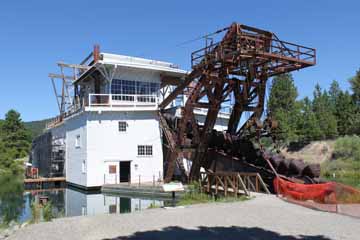
Gold was discovered on the Powder River in Sumpter Valley in 1861. Initially, panning was the main means of extracting the ore but, as the yield dropped to uneconomical levels, dredging started in 1912.
The Sumpter Valley dredge was built in 1935 and was the third and last dredge to work the valley. It moved forward, scooping rock into its seventy-two one-ton buckets. Inside, the rock went through a set of steel cylinders to separate it by size, sending smaller material deeper into the dredge. Using water and sluices, the gold was then separated. The remaining rock passed through the back of the dredge and was deposited behind by another boom.
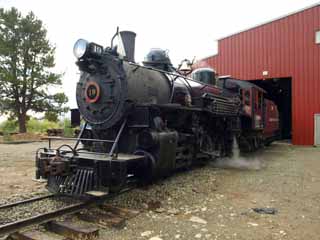
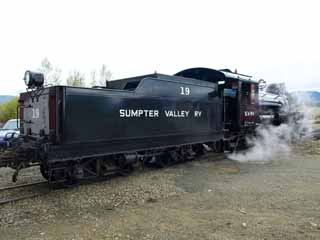
The Sumpter Valley Railway offers inexpensive one-way cab rides, as well as an Engineer for a Day programme, which allows visitors to get behind the throttle of one of the two operating steam locomotives and feel what it's like to ride the rails. It operates on Fridays from the end of May through to the end of September. I booked a session in September 2008.
Above, a rather misty start to the day. When I arrived at 9.00 am, #19 was standing outside the engine house at McEwan already
steamed up. The crew had just completed a round of inspections and lubricating the running gear.

Above, a view looking forward on the fireman's side of the cab while we wait to get started. The head of the air pump is at the side of the boiler. The large pipe running just above the air pumps is the fireman's water injector line.
In the view on the
right, the fireman's injector control is the upright lever on the far left outlined in the window. The engineer's injector control is in the same position on the right.
Immediately to the right of the fireman's injector control is the boiler water sight glass. Just below and to the left, with the lever jutting forward, is the firing valve.

Above, a view of #19's backhead. The bar running at an angle from the centre is the throttle. This regulates the volume of steam released through the dry pipe in the steam dome to the cylinders and, hence, the speed of the locomotive. The boiler pressure gauge is slightly to the right just above the throttle. Note the second water sight glass on the engineer's side. The two Westinghouse brake gauges are just below this.
The "trainee" engineer works under the supervision of the engineer and starts with an introduction to the locomotive controls. After this, I set the brake valve, adjusted the Johnson Bar, took the throttle and we were underway. I found the throttle sensitive to even minor adjustments as I got the locomotive started, but it's important not to give too much steam at this point as it can cause the drivers to slip.
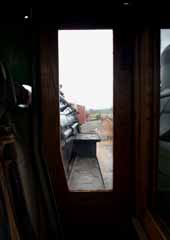
Above, a view looking forward from the engineer's side of the cab. As two water injectors are mandated by Federal law on all operational steam locomotives, a second feed line controlled by the engineer runs along just above the running board.
Ahead, you can see two cars and the caboose that will join the train for our trip. The Sumpter Valley Railway is one of the few that permits visitors to engineer a steam locomotive with a train of cars in tow.
After assembling our train, we eased out of McEwan at about 11.00am, notched up a little more speed and headed for Sumpter.
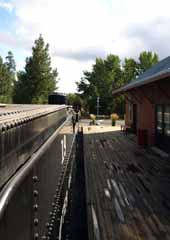
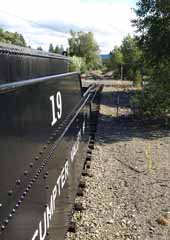
Top, backing out of Sumpter on the return journey. Lower photo, a few hundred yards along, the locomotive uncoupled and ran through a siding to recouple to the front of the train.
The valley was turned over by forty-two years of dredging, and the tailings cover an area eight miles long and a mile wide.
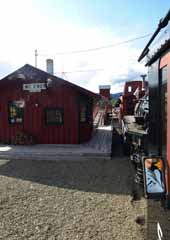


Top left, the train arrives back at McEwan. Top right, it is then reversed to the engine house. Lower photo, with its fire extinguished, #19 uses its remaining steam pressure to back into the engine house.
#19 ended fourteen years of continuous service
on 31st May 2010 and began a comprehensive overhaul required by Federal law. The
locomotive was disassembled at the McEwan engine house and work included installing new boiler tubes, a new rear section of the firebox
door sheet and new firebrick in the firebox, as well as overhauling the dynamo. The work was completed in time for the December 2013 Christmas Trains.

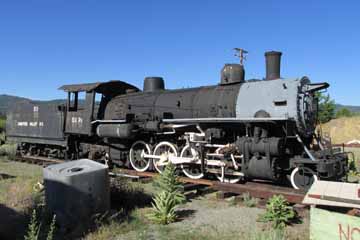
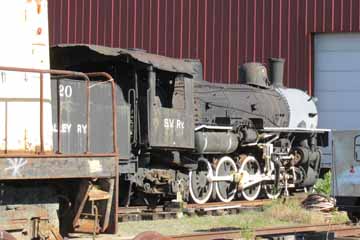
This is one of two Mikado type (2-8-2)
locomotives bought by the Sumpter Valley
Railway in 1920 from Alco’s Schenectady, NY, Works (the other in the pair, #19, is shown previously on this page). It was originally numbered #101 and was intended to work on the Oregon Lumber Company line out of Austin, OR, but spent most of its life on the Sumpter Valley as #20.
Retired in 1940, the locomotive was sold to the White Pass & Yukon Railroad in Skagway, AK, as #80 in 1941. It was retired in 1958 returned to
the SVR in 1977 and was then cosmetically restored, but has since deteriorated somewhat in condition.

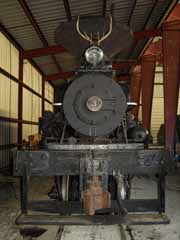

Above, Heisler #3 was built in 1914 by the Heisler Locomotive Works in Erie, PA, for the W. H. Eccles Lumber Company of Austin, OR.
When that line closed in 1926, #3 was bought by the Hallock & Howard Lumber Company in Cascade, ID. From
about 1950, it was used occasionally as a back
up boiler for the mill there.
Hallock & Howard merged with the Boise Cascade Corporation in 1960 and, at some point, #3 went into storage in a shed on the Cascade mill
property.
The locomotive was bought by Sumpter Valley Railroad Restoration in 1971, and was hauled to Oregon via the Union Pacific and restored in a donated shop in Baker City, OR. Restoration
was completed in 1975, and it became the first steam locomotive to operate on a one mile
section of the new Sumpter Valley Railway on 4th July 1976.
Between 1891 and 1941, the Dunkirk Engineering Company of Dunkirk, NY, the Stearns Manufacturing Company of Erie, PA, and finally the Heisler Locomotive Works in Erie built six hundred and twenty-seven geared locomotives of this type. They were produced in both two truck and three truck models.
You can see other Heisler locomotives on the Railroad Museum of Pennsylvania Train Shed, Cass Scenic Rail Road, Travel Town, Northwest Railway Museum and the Mount Tamalpais & Muir Woods #9 pages of this website.
#3 has been deemed unsafe to operate during the peak fire season by the current fire marshal of the Sumpter area. As a result, it now spends much of the peak season in the engine house, although it does run when fire danger is low.
Heisler locomotives have one cylinder set at 45° angles on each side of the boiler. The piston
rods form a "V" connection to a central
crankshaft that attaches to gears in an enclosed gear box on the furthest axle on each truck.
Power is transferred to the other wheel on
each truck by external connecting rods. The enclosed gear box made the Heisler better suited to mining and quarry work than other geared locomotives.

The Whitcomb Company was founded by George Dexter Whitcomb in 1878 with a small machine shop in Chicago, IL, manufacturing coal mining machinery. By 1900, it was also producing knitting machinery.
In 1906, the company built the first successful gasoline locomotive for a large Central Illinois coal mine. The following year, production moved to Rochelle, IL The company was bought by Baldwin in 1929. Production shifted to Baldwin's Eddystone, PA, site in 1952 and the last Whitcomb locomotive was built there in 1956.
The Whitcomb Locomotive Works in Rochelle, IL, built this twenty ton gas mechanical switcher in 1930 for the SVR.
It was sold to the J. R. Simplot Corporation, an agri-business based in Idaho and converted to standard gauge. It appears to have worked at the Simplot plant in Caldwell, ID, in the mid 1980s.

The Plymouth Locomotive Works
built this fifteen ton diesel hydraulic switcher in 1963 as a cabless mine engine for the Perini Corp., in Auburn, CA.
It went through various owners during the following decades, lastly the SVR.
Restored by the SVR, the unit was renumbered #118. The cab was added in July 1996.



Built by the Plymouth Locomotive Works, in Plymouth, ID, this ten ton gas mechanical switcher went to the Nelson Machinery Company, a dealer in North Vancouver, BC. It then passed to Atlas Mine & Supply Company, another dealer in Spokane, WA, in 1972. It spent some time at the Crown Zellerbach Corporation in Camas, WA, before being acquired by the SVR in 1982-1983.
Over 7,500 locomotives were built in Plymouth starting in 1910 under the J. D. Fate Company, then in 1919 as Fate-Root-Heath and finally Plymouth Locomotive Works in the late 1950s. They were generally under 25 tons in weight and gasoline burners designed for industrial use. The last engine came off the factory line in 1999.
Related Links:
Locations along the Sumpter Valley Railway
Sumpter Valley Railway Website
Information on Sumpter Dredge
Send a comment or query, or request permission to re-use an image.
Most of the information included on this page was drawn from Steaming Toward Sumpter 1890-2002, published by the Sumpter Valley Railway Co., in 2002.

Video Management have published a 4 DVD set Running a Steam Locomotive (click on the cover to search for these DVDs on Bookfinder.com)






